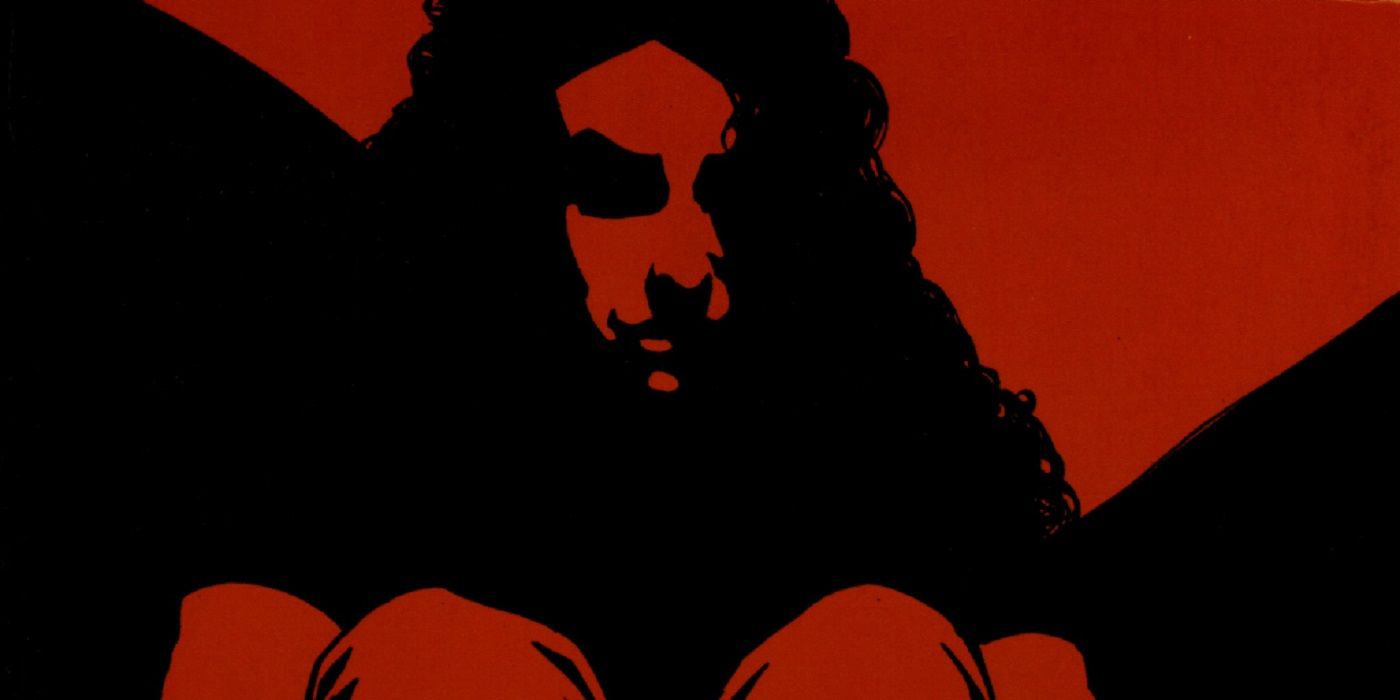
This is "Look Back," a feature that I plan to do for at least all of 2020 and possibly beyond that (and possibly forget about in a week, who knows?). The concept is that every week (I'll probably be skipping the four fifth weeks in the year, but maybe not) of a month, I will spotlight a single issue of a comic book that came out in the past and talk about that issue (often in terms of a larger scale, like the series overall, etc.). Each week will be a look at a comic book from a different year that came out the same month X amount of years ago. The first week of the month looks at a book that came out this month ten years ago. The second week looks at a book that came out this month 25 years ago. The third week looks at a book that came out this month 50 years ago. The fourth week looks at a book that came out this month 75 years ago. The occasional fifth week looks at books from 20/30/40/60/70/80 years ago.
Today, we go back to March 1996 for the release of the first issue of Brian Michael Bendis' Jinx (NOTE: The cover of the first issue is just the word JINX with blood on it, so I used the cover of the first trade paperback of Jinx for the featured image, instead).
Brian Michael Bendis is the perfect example of the proverbial "overnight sensation who has been around for years," as he broke out big in 2000 with Ultimate Spider-Man for Marvel Comics, which led to a long and successful time at Marvel for Bendis, with his work playing a major role in the shaping of the Marvel Universe as well as the Marvel Cinematic Universe. While Ultimate Spider-Man was the BIG deal for Bendis, his profile was already rising leading into that series, with work for Image Comics like Torso, Sam and Twitch and Powers.
However, Bendis had been doing comics since the early 1990s, working at Caliber Comics. In 1993, Bendis did his first crime comic for Caliber, Fire, followed by AKA Goldfish in 1994. Then came 1996's release of Jinx, which co-starred Goldfish from AKA Goldfish. Jinx was a big step forward for Bendis and after seven issues at Caliber, Bendis brought Jinx to Image, as well as his new projects. Jinx was such an important work for Bendis that it remains the name of his website to this day, Jinxworld. So it's a big deal.
And re-reading it now, wow, Jinx A. holds up really well and B. was such a breath of fresh air at the time.
I still remember first seeing the explosion of dialogue on the opening gambling scene in Jinx. It was a shock. This was how people actually spoke and it was somehow being translated into a comic book in a way that surprisingly WORKED.
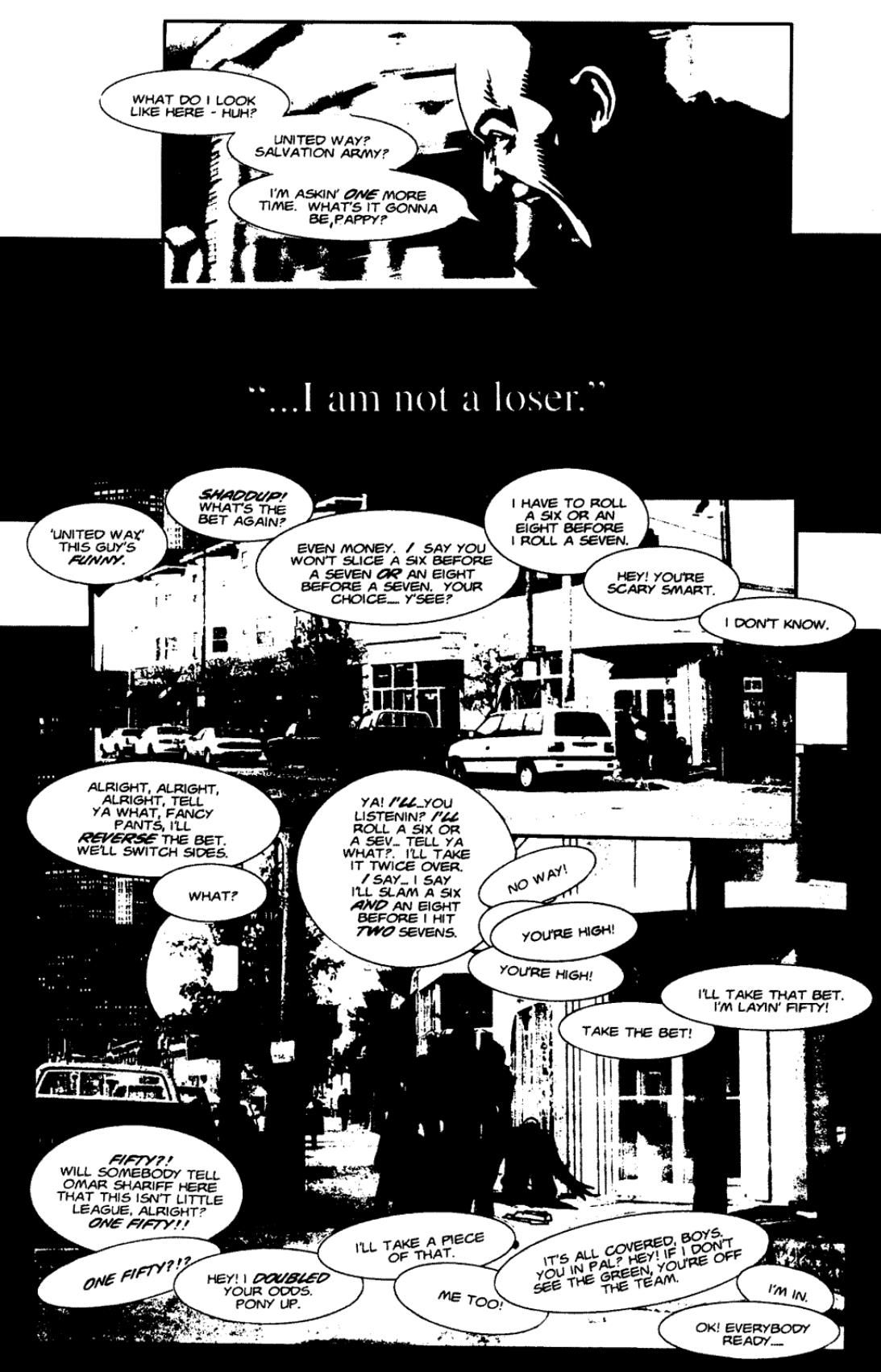
The opening sequence introduces us to Columbia, and he's instantly such a compelling (if extremely annoying) character. The guy is hustling guys at craps and NOT USING LOADED DICE! I love that so much. Of course, when he loses, he then just steals their money and they chase him down and start beating him down until the cops show up...or IS it?
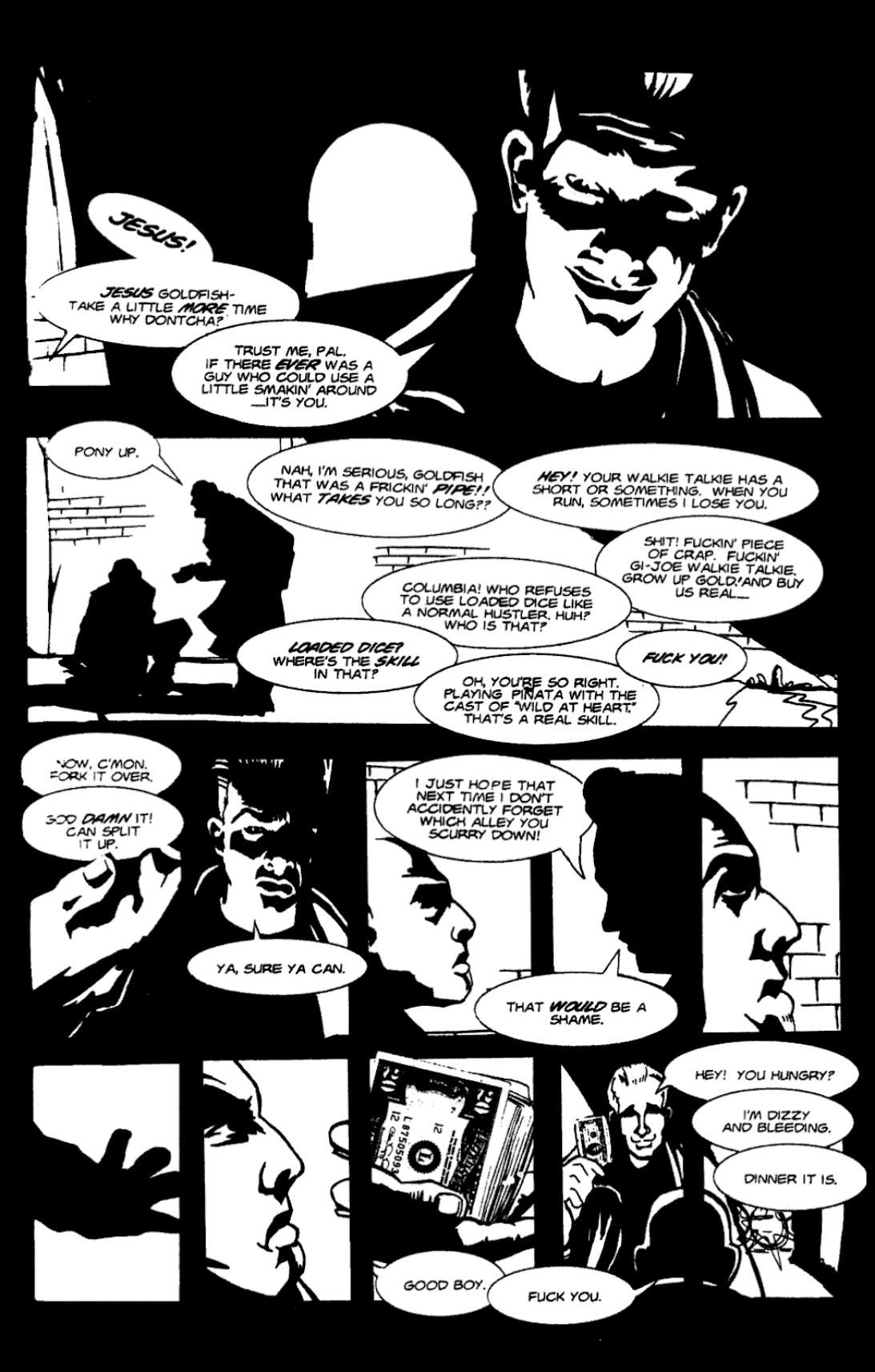
Bendis, as a comic book artist, when he is working in his photo-realistic style, tends to lose a bit of fluidity (the same is true for most artists who work in that style), but boy, he used the heck out shadows in this comic book and when Goldfish walks out of the shadows? That is an excellent reveal.
Really, the book is just filled with three excellent reveals (not to mention the flash-forward that kicks off the book), from Columbia to Goldfish and finally, the title character herself, Jinx Alameda, who we first hear having a conversation with her new partner about something that she is going to try out, and then we see her visit a woman and she shows up looking for the woman's boyfriend, very visibly pregnant...
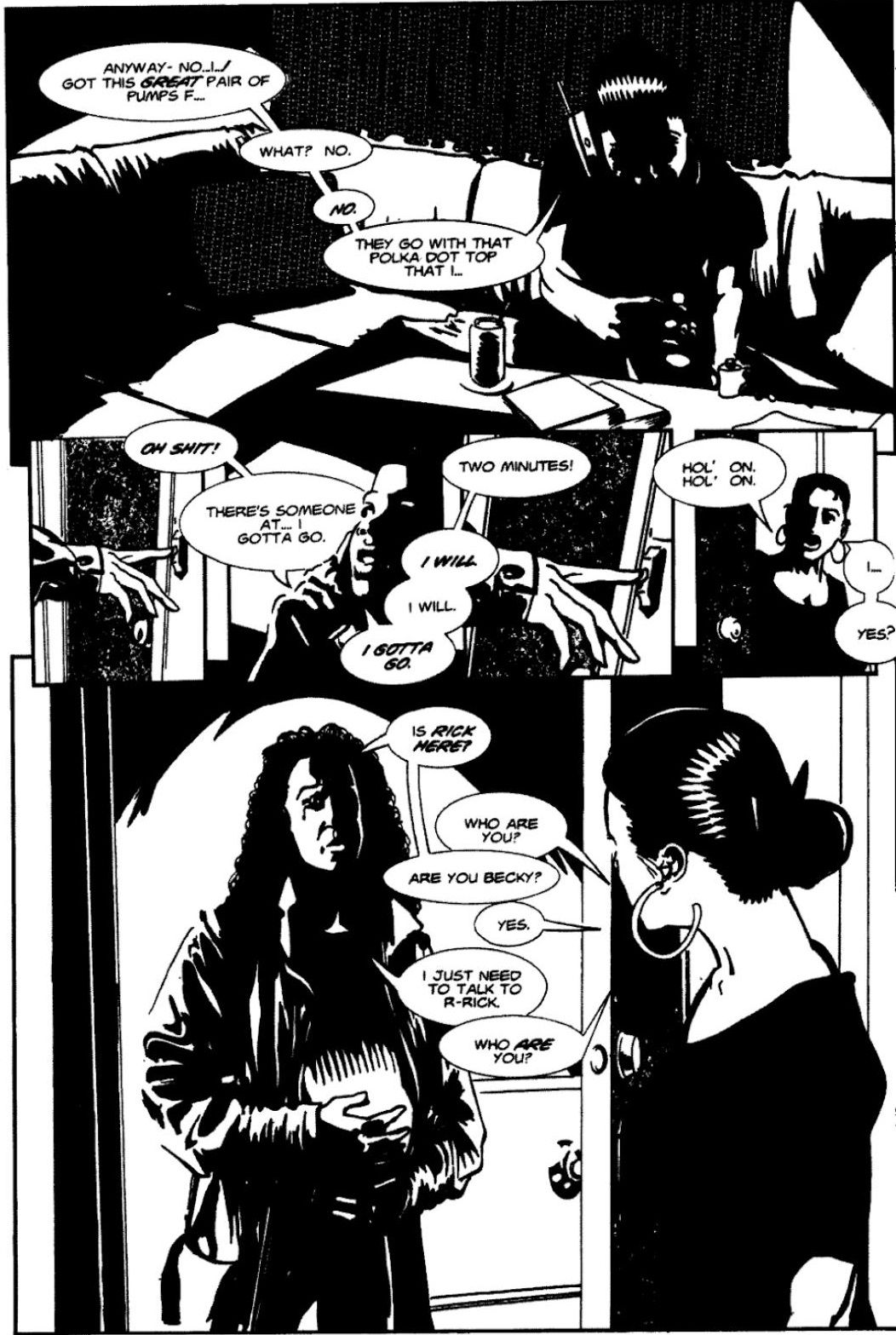
Of course, it is all a scam for the woman to call her boyfriend and get him over there, at which point we learn that Jinx is a bounty hunter. The moment that the guy realizes what he just walked into? That's just some excellent sequential storytelling by Bendis...
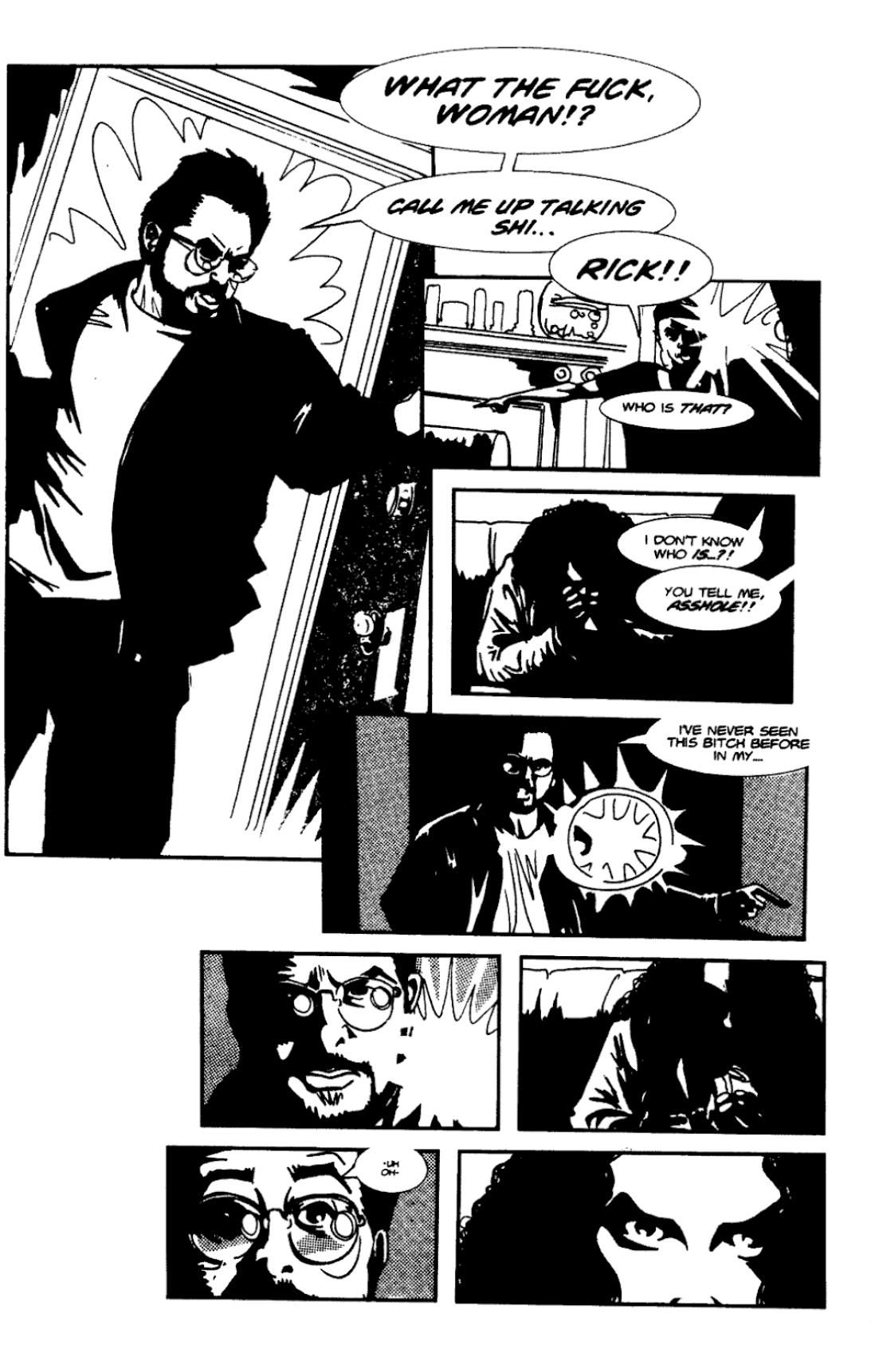
Jinx is easy to love in this sequence, as well, as she tells the woman that, in the long run, she did her a favor here by getting this guy out of her life.
Columbia and Goldfish have an argument about their future when the issue ends as Goldfish sees Jinx for the first time, who we know he ends up with via the flash-forward, but seeing her for the first time as he does is still a fine way to end a first issue. I liked AKA Goldfish, but it was genius to take Goldfish and add Jinx into the mix, as she's a much more interesting character and seeing Goldfish connect to her made Goldfish more interesting of a character in his own right. It really felt like Bendis had something special here and it luckily helped start his career in comics in earnest, but that, of course, would still be a few years to go, but this was a hell of a start.
If you folks have any suggestions for April (or any other later months) 2011, 1996, 1971 and 1946 comic books for me to spotlight, drop me a line at brianc@cbr.com! Here is the guide, though, for the cover dates of books so that you can make suggestions for books that actually came out in the correct month. Generally speaking, the traditional amount of time between the cover date and the release date of a comic book throughout most of comic history has been two months (it was three months at times, but not during the times we're discussing here). So the comic books will have a cover date that is two months ahead of the actual release date (so October for a book that came out in August). Obviously, it is easier to tell when a book from 10 years ago was released, since there was internet coverage of books back then.
0 Comments